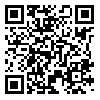Volume 13, Issue 4 (Oct & Nov 2019)
payavard 2019, 13(4): 311-323 |
Back to browse issues page
Download citation:
BibTeX | RIS | EndNote | Medlars | ProCite | Reference Manager | RefWorks
Send citation to:



BibTeX | RIS | EndNote | Medlars | ProCite | Reference Manager | RefWorks
Send citation to:
Safdari R, Choobineh H, Sedaghatzadeh M. The Design of Mobile-Based Self-Care Application Program for Infertility Treatment Using Assisted Reproductive Technology (ART). payavard 2019; 13 (4) :311-323
URL: http://payavard.tums.ac.ir/article-1-6866-en.html
URL: http://payavard.tums.ac.ir/article-1-6866-en.html
1- Professor, Department of Health Information Management, School of Allied Medical Sciences, Tehran University of Medical Sciences, Tehran, Iran
2- Assistant Professor, Department of Laboratory Science, School of Allied Medical Sciences, Member of Specialized Team of Royan Research Institute, Tehran University of Medical Sciences, Tehran, Iran ,hchobineh@tums.ac.ir
3- Master of Science in Health Information Technology, School of Allied Medical Sciences, Tehran University of Medical Sciences, Tehran, Iran
2- Assistant Professor, Department of Laboratory Science, School of Allied Medical Sciences, Member of Specialized Team of Royan Research Institute, Tehran University of Medical Sciences, Tehran, Iran ,
3- Master of Science in Health Information Technology, School of Allied Medical Sciences, Tehran University of Medical Sciences, Tehran, Iran
Abstract: (3055 Views)
Background and Aim: Infertility is a chronic disease with a long-term treatment and self-care leads to an increase in the level of knowledge and awareness about the disease. Moreover, smartphones provide access to information at any time and place; therefore, by using the mobile-based assisted reproductive technology, a self-care application program can be a good choice to help people gain awareness and improve the treatment.
Materials and Methods: Library resources and related and similar applications were studied. Then, data items and the sections required for applied program were identified. To study their importance, a survey was performed on the working members of Iran Helal Infertility Specialty Center. Out of the 35 members of the research community, 20 were randomly selected. The survey questionnaire was made with 32 questions in three sections. In this survey, the data model framework was confirmed; however, the basis of the tools framework didn't need the confirmation of validity and reliability since the data model was designed based on the reference. With summarization of responses, data items and sections specified in designing the program were applied.
Results: The mean of the scores showed that the respondents had identified most of the items as essential. This survey had three main axes. The mean scores of axes of patient information, patient education, and disease management tools are 4.205, 4.402 and 4.275, respectively. The mean scores above 4 show that their effectiveness is very high.
Conclusion: Considering the results, the designed application program can be helpful for patients.
Materials and Methods: Library resources and related and similar applications were studied. Then, data items and the sections required for applied program were identified. To study their importance, a survey was performed on the working members of Iran Helal Infertility Specialty Center. Out of the 35 members of the research community, 20 were randomly selected. The survey questionnaire was made with 32 questions in three sections. In this survey, the data model framework was confirmed; however, the basis of the tools framework didn't need the confirmation of validity and reliability since the data model was designed based on the reference. With summarization of responses, data items and sections specified in designing the program were applied.
Results: The mean of the scores showed that the respondents had identified most of the items as essential. This survey had three main axes. The mean scores of axes of patient information, patient education, and disease management tools are 4.205, 4.402 and 4.275, respectively. The mean scores above 4 show that their effectiveness is very high.
Conclusion: Considering the results, the designed application program can be helpful for patients.
Send email to the article author
| Rights and permissions | |
 |
This work is licensed under a Creative Commons Attribution-NonCommercial 4.0 International License. |





